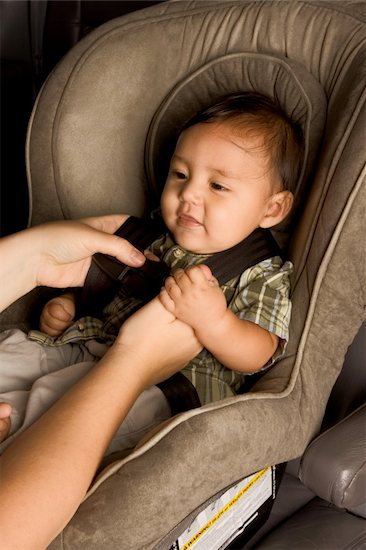Data: Safety Restraint Laws Do Save Lives

The number of motor vehicle fatalities across the country has steadily been declining. (1) New Jersey is in line with these national statistics, having experienced a record low 544 fatalities in 508 crashes last year. For children birth through 8 years of age, this represents a 43% reduction in fatalities since 2002 according to preliminary statistics released by the New Jersey State Police. (2)
Several factors have been credited with contributing to this decline: safer car designs, better engineered roads, improved medical care for traumas, and even the economy – people drive less when money is tight and fuel prices are high. (2) But the factor given the most credit for protecting children involved in car accidents is the appropriate use of safety restraints.
According to the National Highway Traffic Safety Administration (NHTSA) figures, it is estimated that car seats saved about 3,300 children between birth and 4 years of age from 2002 to 2011. If all children were properly restrained in car seats, the NHTSA estimated that an additional 800 lives could have been spared for that same period. (1)
National statistics show that despite the decline in fatalities, over 9,000 children were killed in motor vehicle accidents from 2002 to 2011 and, of those, one third were not properly restrained. (1)
New Jersey State Police statistics show the use of seat belts in general declined to 88.3% in 2012 from 94.5% in 2011; however, New Jersey’s seat belt usage statistic is still higher than the national average of 86%. (2) The Centers for Disease Control (CDC) announced that the use of safety restraints for children rose in the last 10 years to 91% from 88%. (1)
Despite the overall declining fatality rate in connection with motor vehicle accidents, the NHTSA’s report shows that the U.S. does not compare favorably with other countries in terms of motor vehicle fatalities of children. The fatality rate in this country for children between the ages of birth to 14 is 1.9 per 100,000 children, compared with 0.5 per 100,000 in Britain and 1.1 per 100,000 in Norway. (1)
Every state in this country has laws requiring the use of car safety seats for children, although the specifics of these laws vary. New Jersey law requires babies under one year and weighing less than 20 pounds to ride in rear-facing car seats in a semi-reclining position. Toddlers over one year old must sit in an upright position in forward-facing seats. State law also requires all children younger than 8 years old and weighing below 80 pounds to ride in an age-appropriate car or booster seat. Children under 8 years old who weigh over 80 pounds can use the car’s seat belts if correctly fastened. Everyone over 8 years of age, regardless of weight, is required to use seat belts. (4)
In light of the positive impact safety restraints have had on preventing motor vehicle fatalities, New Jersey State Police predict there will be increased enforcement of the State’s seat belt laws this year (2) and, one can imagine, the same would apply to the use of car safety seats for younger children.
(1) http://www.today.com/health/tag/car-acccident
(2) http://www.njsp.org/news/pr010814.html
(3) http://www.nj.gov/oag/hts/childseats/index.html
(4) http://www.carseatlaws.com/new-jersey-car-seat-laws-2
 New Jersey Injury Lawyers Blog
New Jersey Injury Lawyers Blog

